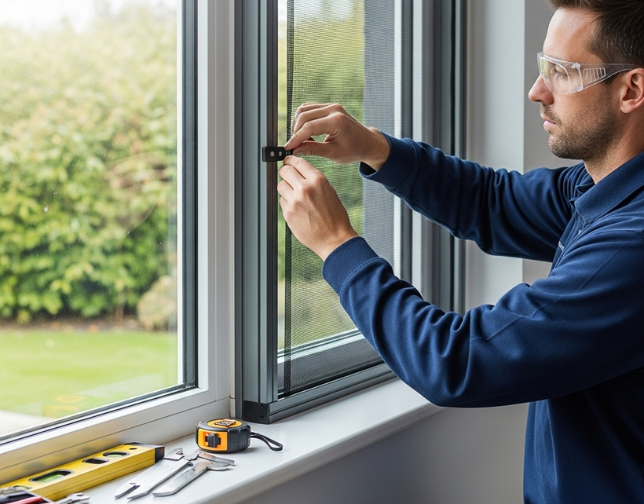Balcony Netting: Safety, Comfort, and Peace of Mind
- malik tanveer
- Aug 12
- 3 min read

Balconies are one of the most cherished parts of a home. They offer fresh air, open views, and a space to relax. However, they can also present safety risks—especially for children, pets, and even elderly family members. This is where balcony netting comes into play. Balcony netting is a protective mesh installed around the balcony area to prevent accidental falls, keep unwanted intruders like birds away, and provide an extra layer of security without blocking natural light or air.
Understanding Balcony Netting
Balcony netting is typically made from high-quality, weather-resistant materials like nylon, polyethylene, or stainless-steel wire coated with plastic. It’s designed to withstand outdoor conditions such as strong winds, heavy rains, and prolonged sunlight exposure. The mesh is fine enough to block hazards but not so dense that it disrupts ventilation or the balcony’s view. This makes it an ideal safety solution for apartments, high-rise buildings, and even villas.
Importance of Balcony Netting for Families
Balcony netting can save the lives of families with little children using it. Because they are inherently curious, children may play dangerously near balcony edges. They can't climb over or slide through cracks in the railing thanks to a strong, well fitted net. In a similar vein, balcony netting assures pet owners that their dogs, cats, or birds may enjoy the outdoor area without fear of falling.
This safety feature may also be advantageous to elderly people. Despite the fact that they might not be as active as kids, accidents could nevertheless happen due to balance problems or temporary confusion. A protective barrier added by balcony netting gives the whole family peace of mind.
Types of Balcony Netting
Balcony netting comes in various types depending on its purpose. Safety nets for children and pets focus on strength and durability. Anti-bird nets are usually lighter but have fine mesh to keep pigeons and other birds from nesting on your balcony. In some cases, multi-purpose nets can serve both safety and bird-control needs.
The choice of material is also important. Nylon nets are lightweight and easy to install, while polyethylene nets offer excellent resistance to UV rays. Stainless-steel coated nets are extremely durable and ideal for long-term use, though they are more expensive.
Installation Process
Professionals should install balcony safety net to guarantee the highest level of safety. Using hooks, clamps, or fasteners, the balcony's area must be measured, the appropriate net type must be chosen, and the net must be securely fastened to the walls and railing. Expert installers make sure the net is taut and gap-free, which makes it both practical and imperceptible.
There are kits on the market for anyone who would rather do their own installation. However, to keep the net from drooping or coming loose over time, appropriate tensioning and solid latching are essential.
Benefits Beyond Safety
While safety is the primary reason for installing balcony netting, there are additional benefits. One major advantage is keeping birds away. Bird droppings can cause hygiene issues, and nesting birds can bring insects and other pests. A balcony net prevents them from entering while still allowing fresh air to circulate.
Balcony netting can also add privacy. Depending on the type of mesh, it can make it harder for neighbors or passersby to see into your space, allowing you to enjoy your balcony without feeling exposed. Some homeowners even use the net as a base to hang plants, lights, or decorative items, turning a safety feature into an aesthetic one.
Maintenance and Care
Although balcony netting typically requires little upkeep, periodic cleaning is required to maintain its functionality and appearance. Over time, debris such as leaves, dust, or bird droppings may collect. Its look can be restored with a basic soap and water wash. It's a good idea to inspect metal-coated nets for corrosion or rust every few months. Continued safety is ensured by tightening the net again if it comes loose.
Cost Considerations
The cost of balcony netting depends on factors like material type, balcony size, and installation complexity. Nylon and polyethylene nets are usually more affordable, while stainless-steel options are priced higher but last much longer. Although it is an additional expense, many homeowners view it as a worthwhile investment for the safety and comfort it provides.
Conclusion
Balcony netting is more than just a protective barrier—it’s a smart, practical, and often necessary home improvement. Whether it’s to safeguard children, protect pets, or keep birds away, balcony netting ensures that your balcony remains a safe and enjoyable space. With the right material, professional installation, and occasional maintenance, it can serve as a long-lasting solution for peace of mind.
In today’s urban lifestyle, where balconies often serve as our closest connection to the outdoors, ensuring their safety is essential. Balcony netting offers an effective way to balance openness with security, allowing you to enjoy fresh air, beautiful views, and relaxation without worry. It is an investment that protects not only your loved ones but also your quality of life.


Comments